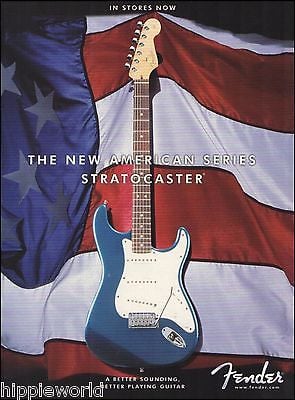Goodbye American Standard. Welcome American Series!


|
In the summer of 2000, after 13 years of honorable service, American Standard Stratocaster was retired and, temporarily, replaced by American Stratocaster, often called “Mike Lewis’s baby”, although the Fender marketing manager himself pointed out that many in his team had contributed to the birth of the American Series.
But why redesign the American Standard, a guitar that had obtained a huge success? Mike Lewis and the other marketing manager, Richard McDonald, explained that there were some ideas on how to modify it coming from many musicians whose input needed to be considered, as Leo Fender and Don Randall did, to improve their instruments. When these proposals reached a large number, they decided to create a completely new guitar. Dan Smith remarked that the new Fender born after the 1985 buyout could produce higher quality guitars than in the early years of its life, both from the experience gained over the years, and from an improvement in the machinery and construction processes. |

|
© COPYRIGHT 2014-2024 FUZZFACED.NET BY ANTONIO CALVOSA - TUTTI I DIRITTI RISERVATI
La copia, la riproduzione, la pubblicazione e la redistribuzione dei contenuti, se non autorizzate espressamente dall'autore, sono vietate in qualsiasi modo o forma. |

|
© COPYRIGHT 2014-2024 FUZZFACED.NET BY ANTONIO CALVOSA - ALL RIGHTS RESERVED
The copying, reproduction, publication and redistribution of the contents, unless expressly authorized by the author, are prohibited in any way or form. |